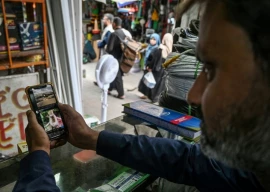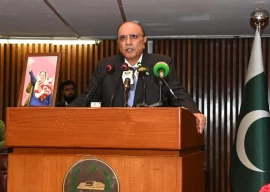
Indian cartoonist Aseem Trivedi was arrested in Mumbai on a charge of sedition for his cartoons, which allegedly mocked the Indian Constitution. Mr Trivedi, a supporter of the Indian anti-corruption movement, actively participated in Anna Hazare’s campaign. He has been sent on judicial remand till September 24 and if convicted, his sentence could be up to three years. Rightfully so, Mr Trivedi’s arrest has led to criticism by the Indian media and other prominent figures, including former Chief Justice of India Markandey Katju, who claimed that such an act is unacceptable in a democracy.
In a democracy, citizens are encouraged to speak out when they have differences of opinion with the government, as that is the way to move forward, by incorporating everyone’s opinions in government policies and giving all citizens an equal say. Thus, when Mr Trivedi, a citizen, expressed his opinions — and possibly those of many in India — he should have been allowed to do so freely. His cartoons did not impinge on anyone’s rights and only sought to achieve an honest government for the improvement and advancement of India. However, recently, it seems that the Indian government has become more stringent on people’s expression of freedom. Earlier, the government banned Mr Trivedi’s cartoon website and in April, the Indian police arrested a professor in Kolkata for publicly posting cartoons that ridiculed West Bengal Chief Minister Mamata Banerjee.
The fact that Mr Trivedi was called out by a lawyer, draws a contrast to Pakistan’s own lawyers, who showered Mumtaz Qadri with garlands for murdering Salmaan Taseer, a man who had spoken up against the misuse of a law. However, this is a surprising move by the Indian government. It is a violation of democracy and a person’s freedom of expression. While we cannot help but look inwards towards Pakistan on the anti-corruption issue, India should also show more tolerance for its people’s dissenting views — especially since the Indian parliament has been in turmoil for the past two weeks.
Published in The Express Tribune, September 12th, 2012.
COMMENTS (6)
Comments are moderated and generally will be posted if they are on-topic and not abusive.
For more information, please see our Comments FAQ















































Onwards to Second Emergency! Then, it was the MOTHER-IN-LAW, now it is the DAUGHTER-IN-LAW who is no stranger to fascism, coming from that land of an ace fascist, Mussolini, as she does! We are told to "honour and respect" the MAJESTY of Parliament by the score of minions serving the Dynasty. Parliament is an institution the People of India create to serve them. "Honour and Respect" the Majesty of the SERVANT, indeed!
Siddharth: I have seen the cartoons and I feel exactly the same way.
I think Indian Parliament has become a cesspool with large number of criminals making their way in. I think Indian emblem of four lions with Satyameva Jayate has turned into Brishtameva Jayate with lions replaced with wolfs. I do think Bharat Mata is being raped by Politician's corruption. I do think Kasab is insulting Indian constitution.
Now, in above sentence I have said the same things as the cartoons Trivedi had drawn. Is it seditious! Don't be ridiculous!
Check the National honor act of 1971. It prohibits insults to Flag, constitution and national anthem.
Now, Indian flag is not just tricolor (if so then Congress flag in tricolor itself is an insult!). Aseem didn't draw the flag at all, he used tricolor. Bharat Mata is not a symbol specified in the act. Aseem drew a parliament as a toilet - and Parliament is not a symbol specified by the act. The only insult that can be alleged is the dog peeing on the word 'constitution'. While constitution of India can't be insulted, the word constitution itself is not the symbol of India.
So where is the case - legally?
Ok the cartoons were bad but no one can punish anybody for that. Does one send someone to jail just because he/she is a bad cook? Our parliamentarians should also know how to behave. Its their behavior in the parliament that is worst than the cartoons themselves.
Democratic voices coupled with judicial process will compel the police to release him shortly, but this act will cost dearly to the congress party in states and at federal level.
HE is a bad cartoonist but that is not a crime. Since Katju is the Head of Press Council of India in addition of course to being a retired supreme court judge, his voice should carry heft.